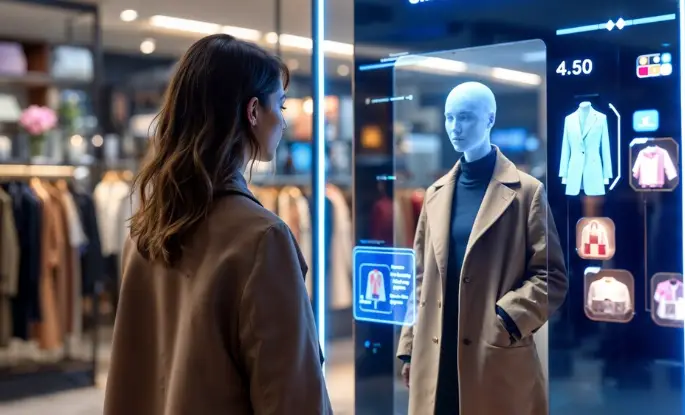As environmental awareness grows and consumers become more conscious of their purchasing choices, sustainable marketing has moved from a niche concern to a mainstream priority for brands. In 2025, eco-friendly strategies are set to dominate the marketing landscape, with brands across industries recognizing the importance of sustainability not only as a moral imperative but as a key driver of customer loyalty and business growth. The focus on sustainability is not just about minimizing environmental impact but also about building a brand identity that resonates with values-driven consumers who prioritize the planet’s well-being.
One of the primary ways brands are embracing sustainable marketing in 2025 is through transparency. Today’s consumers are savvier than ever, and they demand to know the origin of the products they buy and the environmental impact of their purchases. Brands are responding to this demand by providing detailed information about their supply chains, production processes, and sourcing of materials. In 2025, transparency is no longer a choice but a necessity. Companies are openly sharing the carbon footprint of their products, the ethical standards of their labor practices, and the steps they are taking to reduce waste. This level of transparency builds trust with consumers, as it shows a genuine commitment to environmental responsibility. In many cases, brands are using digital tools such as QR codes and blockchain technology to allow consumers to trace the journey of a product from raw material to finished item, adding an extra layer of accountability to their marketing efforts.

In addition to transparency, a growing number of brands are adopting a circular economy approach to their marketing strategies. The traditional linear model of “take, make, dispose” is being replaced by a more sustainable circular model, where products are designed to be reused, refurbished, or recycled. In 2025, brands are prioritizing product durability, repairability, and recyclability, and they are highlighting these features in their marketing campaigns. Many companies are launching take-back programs that encourage customers to return old products for recycling or upcycling, reducing waste and creating a positive brand image. The focus on a circular economy not only helps minimize environmental impact but also taps into the growing trend of conscious consumerism, where customers are willing to pay a premium for products that align with their values.
Sustainable packaging is another crucial element of eco-friendly marketing in 2025. As the global waste crisis continues to make headlines, consumers are becoming increasingly critical of excessive and non-recyclable packaging. In response, brands are investing in innovative, sustainable packaging solutions that reduce waste and appeal to eco-conscious buyers. This includes the use of biodegradable materials, compostable packaging, and minimalistic designs that eliminate unnecessary materials. Brands are also experimenting with reusable packaging, such as containers that can be returned, refilled, and reused multiple times. These eco-friendly packaging choices are highlighted in marketing materials, with brands showcasing their commitment to reducing plastic waste and protecting the environment. Packaging has become a powerful storytelling tool, and brands are using it to convey their sustainability ethos to consumers.
In 2025, partnerships and collaborations play a significant role in sustainable marketing. Brands are recognizing that achieving sustainability goals often requires collective action, and they are forming alliances with environmental organizations, non-profits, and other brands to drive change. These collaborations are often highlighted in marketing campaigns, showcasing the brand’s dedication to sustainability and its willingness to work with others to make a difference. For instance, companies are teaming up to develop sustainable technologies, share best practices, or participate in environmental conservation projects. These partnerships not only enhance a brand’s credibility but also help reach a broader audience by tapping into the networks and supporters of partner organizations.
“Consumers are savvier than ever, and they demand to know the origin of the products they buy and the environmental impact of their purchases.”
Social media and digital platforms have become key tools for promoting sustainability in 2025. Brands are leveraging the power of social media to engage with eco-conscious consumers and spread awareness about their sustainable initiatives. From influencer marketing that highlights eco-friendly products to viral campaigns that encourage sustainable behavior, social media is a driving force in sustainable marketing. In 2025, user-generated content plays a critical role, with consumers sharing their own experiences with sustainable products and tagging brands, thereby creating a ripple effect of advocacy and positive reinforcement. This digital word-of-mouth marketing builds a sense of community and reinforces the idea that sustainability is a collective effort involving both brands and consumers.
One of the most noticeable shifts in sustainable marketing in 2025 is the rise of purpose-driven branding. Modern consumers are drawn to brands that stand for something beyond profit, and businesses are aligning their marketing strategies with a larger purpose. Whether it’s a commitment to reducing carbon emissions, supporting renewable energy, or investing in local communities, brands are using their marketing platforms to communicate their mission and values. In 2025, purpose-driven brands are more than just companies selling products; they are advocates for social and environmental causes. This shift is evident in advertising campaigns, social media content, and even product packaging, as brands seek to connect with consumers on an emotional level by sharing their vision for a more sustainable future.

Data plays a pivotal role in sustainable marketing, as brands increasingly rely on analytics to track the effectiveness of their eco-friendly initiatives. In 2025, companies are using sophisticated data tools to measure the environmental impact of their operations, from energy consumption and waste generation to carbon emissions and water usage. These metrics are not only used to optimize internal processes but also to create data-driven marketing campaigns that highlight sustainability achievements. By presenting quantifiable results, brands can demonstrate their progress in a credible way, appealing to a data-conscious audience that values transparency and accountability. This trend towards evidence-based marketing is helping to differentiate brands that are genuinely committed to sustainability from those engaging in “greenwashing.”
Influencer marketing has also evolved in 2025, with a stronger emphasis on authenticity and long-term partnerships. Eco-conscious influencers are playing a significant role in sustainable marketing, as their followers trust their recommendations and see them as credible advocates for environmental causes. Brands are moving away from one-off sponsorships and instead opting for long-term collaborations with influencers who align with their values. These influencers become brand ambassadors, involved not only in promoting products but also in participating in sustainable initiatives and attending events. The content created from these collaborations is genuine and relatable, resonating with audiences who are skeptical of traditional advertising methods and looking for real, unfiltered insights into a brand’s sustainability journey.
Green certifications and eco-labels have become essential components of sustainable marketing in 2025. As consumers look for third-party validation of a brand’s eco-friendly claims, certifications from reputable organizations provide an added layer of credibility. Labels like “Certified B Corporation,” “Fair Trade,” and “Carbon Neutral” are prominently displayed in marketing materials, giving consumers confidence that the products they are purchasing meet high environmental and ethical standards. In 2025, brands are not just aiming to meet these standards but exceeding them, as they understand that being a leader in sustainability can be a powerful differentiator in a crowded market.
Sustainable marketing in 2025 is a dynamic and ever-evolving field, as brands continue to innovate and adapt to the changing demands of consumers. Whether it’s through transparency, circular economy practices, eco-friendly packaging, or purpose-driven branding, companies are finding new ways to engage with an environmentally conscious audience. In an era where sustainability is no longer a trend but a necessity, brands that can successfully integrate eco-friendly strategies into their marketing will not only appeal to today’s consumers but also contribute to a healthier and more sustainable planet for future generations.


